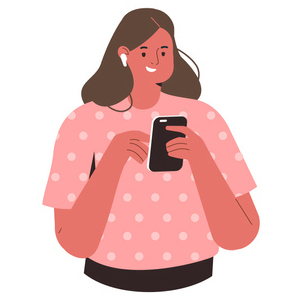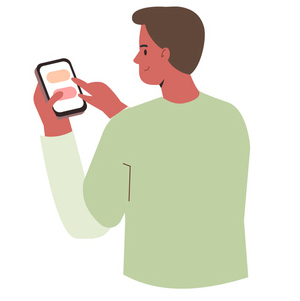Selling products and services in today’s market is a whole world away from how it was done 30, 20, or even 10 years ago.

With the explosive growth of social media, people can easily access references, testimonials, and reviews on their favorite products. It stands to reason that we can’t just tell them the benefits of their offer without showing them the hardcore proof.
But we also cannot sell to an audience we don’t know. It’s important to step into the shoes of the customer we’re selling to, so we can better equip them with the information and conviction they need to purchase.
And it all begins through market research.
- Market Research – What is it and why is it useful?
- How to Conduct Market Research
- Types of Buyer Personas
- Selling to Different Buyers

Market Research – What is it and why is it useful?
Put simply, market research is the gathering of information about the people you want to sell your products or to ensure what you’re selling is going to be profitable or successful.
Not only is market research vital for validating new ideas, products, and offers and being used across all industries and niches, but it helps YOU have a deep understanding of the level of awareness your consumer has.
It helps you answer questions like:
- Does my target audience want this or need this?
- Do they have an understanding of their current situation or problem?
- Am I assuming what I think I know about them?
- When would my target audience be ready for something like this?
- What steps do I need to take them through before putting this on the market?
- How can I differentiate my offer with the others on the market?
As the world of marketing and advertising continues to change, it’s important that the way we communicate with our target audience changes too. We want to meet our audience where they are, and it all begins with market research.

How to Conduct Market Research
There are many ways to conduct research, and in more cases it’s important to conduct research in two areas.
- Your target audience
- Your competitors
In order to conduct research for your target audience, you can use a variety of methods. What you use will depend heavily on what kind of offer you’re selling.
Here are a few examples:
- Surveys or interviews
- Observation-based research
- product/service research
- A/B testing
You can add a layer of information by conducting market research on your competition and asking questions like:
- What do we do that’s similar?
- How are they pricing?
- How is their offer different from mine?
- What is the audience response to their offer?
- How can I make my offer stand apart from the competition?
Using both aspects of your research will help you evaluate the data and draw conclusions.
Now that you have an understanding of what market research is, why it’s important, and the foundations of how to do it… it’s time to learn more about your audience and how they buy.
Types of Buyer Personas
There’s a lot of research about buyer personas and how many there truly are, but we’re going to break down 4 of the most common.
Decisive
Decisive buyers are speedy purchasers. If there are clear benefits and will give them a result, they are likely to buy.
Spontaneous
Spontaneous buyers are also quick purchasers and may be most likely to purchase products from paid ads on social media due to excitement of an offer.
Methodical
Although decisive and methodical buyers are similar as they both use logic to purchase, methodical buyers want every piece of information they can get to ensure they’re getting the most out of the offer.
Emotional
Like methodical buyers, emotional buyers take a bit longer to purchase because they want to know the WHY. What is the impact or purpose of selling?
You may be thinking… “But, if there are so many kinds of buyers, how am I supposed to sell to all of them at the same time?!”
That’s kind of the point… You don’t have to sell to all of them at the same time.
Selling to Different Buyers
In the thousands of different industries, you may find your unique audience has a majority of one type of buyer. And if that’s the case… you’re one of the lucky ones.
But if you fit into the crowd where it’s a pretty even split across the board, then here are a few tips on how you can use your market research and knowledge of the buyer personas to market to your audience.
Through the market research process, you should be able to pinpoint WHO wants your offer and HOW it’s different from others like it in the market. GREAT!
Now, using that information, think about how you would go about having a conversation about your offer with each of the types of buyer personas.
What do they need to know, learn about, or have in order to buy?
Here are a few examples:
Let’s use an e-commerce product for simplicity, and let’s say it’s a skin serum to hydrate skin.
Product: skin serum
Buyer persona: Decisive
A decisive buyer would need clarity and brevity. Tell them what it is, how it helps them, and the end result.
Product: skin serum
Buyer persona: Spontaneous
A spontaneous buyer (although wants the results) is also interested in playfulness and excitement. Images and bright colors play a big role in this buyer’s decision. What does the packaging of the serum look like? Is it captivating to the eye?
Product: skin serum
Buyer persona: Methodical
A methodical buyer would need to know the ingredients that get them the results of the serum and how each of them play a role. They would need to know how long it would take to see results and seeing reviews are important in this buyer’s decision.
Product: skin serum
Buyer persona: Emotional
An emotional buyer wants to know the story of creation of the product. They want to see reviews to ensure people’s lives have been impacted because of this product.
The good news is you don’t need to sell to all the different buyer personas at the same time. Mixing up the kind of marketing material you put out will ensure that the information is getting out there in a variety of ways and at some point will target a specific buyer persona.
About The Author
Rachel Gogos is a multi-passionate entrepreneur with a strong desire to help people by creating strong personal brands and businesses. She’s personally launched dozens of books, e-products, and services; and hundreds of products and services with her clients. She started her career at the United Nations headquarters in New York City, where she helped create the look and feel for the organization’s first website.
Today, in her current role running brandiD, Rachel channels over 15 years of marketing and communications experience into each and every website for brandiD’s clients.
And check out her book, Build Your Brand: The Distinctive Guide to Soul-Based Marketing. It will help you uncover your personal brand.








